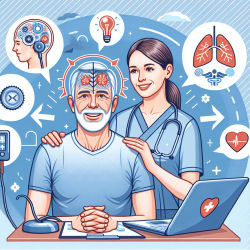Introduction
Parkinson's Disease (PD) is a chronic neurodegenerative disorder that significantly impacts both motor and non-motor functions. It affects approximately 1% of individuals over 60 years old, with prevalence increasing with age. PD is characterized by symptoms such as tremors, rigidity, bradykinesia, and postural instability, collectively known as TRAP. Additionally, non-motor symptoms like speech disorders, dysphagia, and cognitive impairments further reduce the quality of life (QoL) for those affected.
While traditional therapies have been beneficial, they often lose effectiveness as the disease progresses. This is where telerehabilitation (TR) steps in, offering a promising solution to improve access to specialist care and maintain or even enhance patient outcomes.
Methods and Findings
A systematic review was conducted, analyzing 15 articles involving 421 PD patients. The studies focused on TR's impact on motor tasks such as gait and balance, upper limb dexterity, and non-motor dysfunctions like speech disorders. The review adhered to PRISMA guidelines and included data from several databases including PubMed/MEDLINE and SCOPUS.
Key Results
- Motor Symptoms: TR was found to be effective in improving gait, balance, and upper limb dexterity. Technologies like virtual reality (VR) were particularly useful in enhancing postural control and movement velocity.
- Non-Motor Symptoms: Speech therapy delivered via TR, especially the Lee Silverman Voice Treatment (LSVT), showed significant improvements in vocal loudness and speech intelligibility.
- Quality of Life and Patient Satisfaction: TR programs led to improvements in QoL and received high satisfaction ratings from patients, particularly in terms of convenience and accessibility.
Conclusion
Telerehabilitation offers a viable alternative to traditional rehabilitation methods, especially for patients with geographic or mobility limitations. It not only matches the effectiveness of in-person treatments but also provides additional benefits like reduced travel time and costs. However, more research is needed to establish long-term efficacy and develop standardized protocols for TR in PD management.
For more information, please follow this link.










